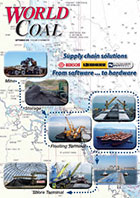Editorial comment
Last month, a mining company in Australia was convicted of desecrating a sacred aboriginal site – the first time a company has been successfully prosecuted for such an offence. Known as Two Women Sitting Down, the site is associated with the Kunapa people and was damaged after blasting at the nearby Bootu Creek manganese mine in the Northern Territory. The company was fined AU$ 150,000.
Register for free »
Get started now for absolutely FREE, no credit card required.
A tragedy for the Kunapa people, the damage to Two Women Sitting Down is also a reminder to the mining industry of the tension that can exist between maintaining business success and being a good neighbour. This is particularly true in areas where mining operations share land with aboriginal communities for whom the land has provided a home for generations. But it extends to all communities that live in the shadow of large mining operations. One such community is Bulga, a village of 300 people in the Hunter Valley region of New South Wales. Here, residents are fighting against the expansion of Rio Tinto’s Warkworth coal mine. They recently won a case in the state Land and Environment Court to prevent the expansion, citing “negative social impacts on local community” and threats to its “sense of place.” Rio Tinto have appealed that ruling to the state supreme court and say that up to 1300 local jobs may be lost if the mine is not allowed to expand. It is not always a story of conflict, however. Elsewhere, local communities welcome the economic boost mining companies can bring. This can be especially valuable to aboriginal communities that often find themselves socially and economically marginalised. In the US Powder River Basin, the Crow Tribe has recognised this and is working with Cloud Peak Energy, to develop the coal resources in its tribal lands. These resources “offer significant potential for good-paying jobs and a diversified source of revenue for essential tribal government services,” according to Darrin Old Coyote, chairman of the Crow Tribal executive branch. With such a range of reactions, community reaction to mining is a potential source of risk to new mining projects. So what can the mining industry do to avoid confrontation and build a positive and mutually beneficial relationship with local communities? Geoff Sharrock, president of The Australasian Institute of Mining and Metallurgy, argues that communication is key – and that communication must begin early: “mining companies need to plan to include community engagement and environmental assessment professionals early in a project, so that they can work with the exploration geologists from the start […] Effective engagement with land holders and communities is all about human relationships.” Many mining companies already acknowledge that community engagement is important – but more can always be done. To commit to early and genuine community engagement may require time and patience, but in the long run will build a better relationship with host communities and make incidents like the destruction of Two Women Sitting Down less likely to happen. For an industry that is often maligned, the benefits should be obvious. As an old advert for British Telecom used to say: “It’s good to talk.”


